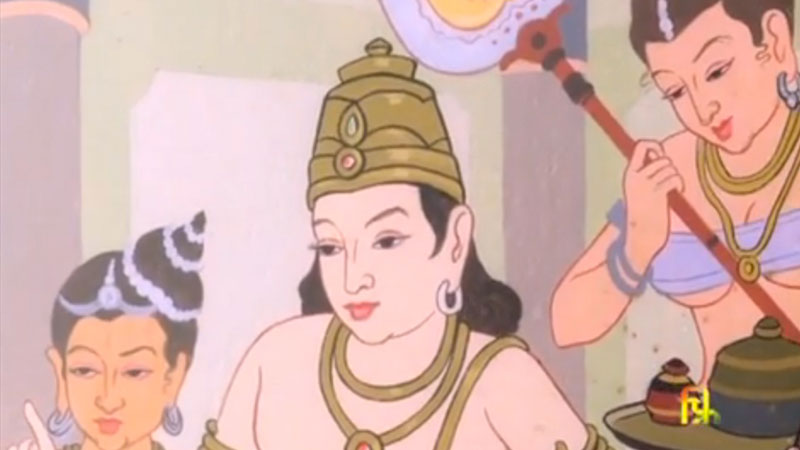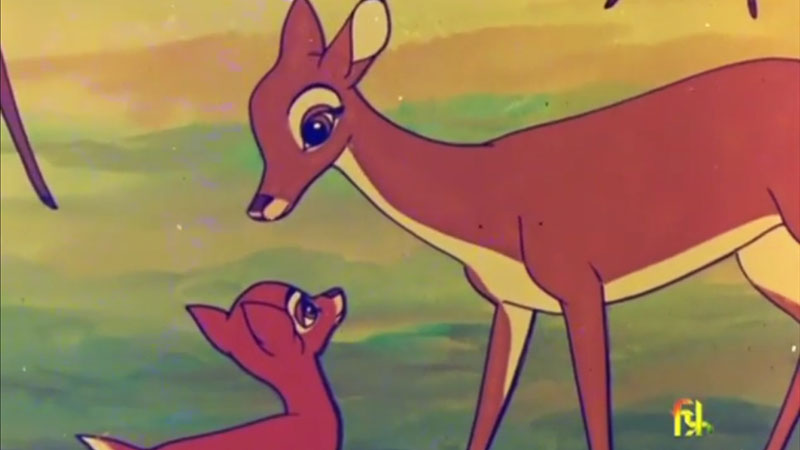Design Course
The Story of Indian Animation
History and Journey so far
by
Films Division Of India

In the eventful year of 1948, just after India got independence, there was a need to express the energy of the triumphant Indians. The Government of India closed ranks with the Ministry of Information and Broadcasting to set up The Films division of India (FDI).
This space came well equipped with cameras, trained film personnel, recording & editing rooms and preview theaters.
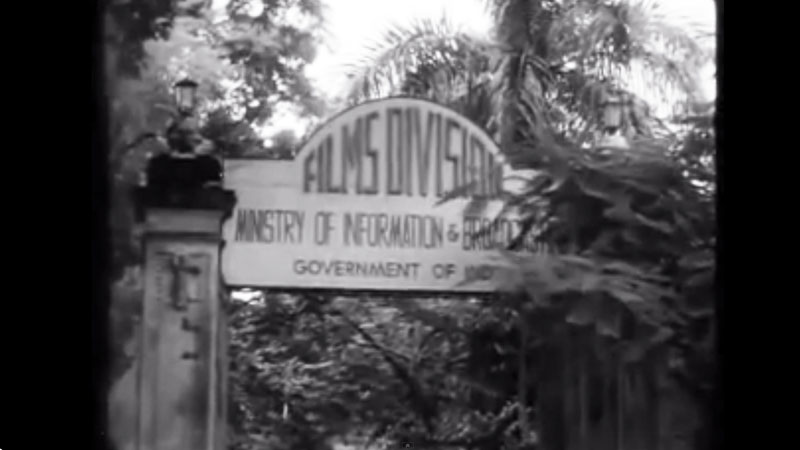
Films Division of India (FDI).
Image source: Films Division of India
FDI with its headquarters in Mumbai paved the way for films on the social, cultural and political aspects of the Indian subcontinent. Over the years the division has weaved its way through a large number of theatrical and non-theatrical circuits (educational institutions, doordarshan, film societies and organizations) of India. Besides producing documentaries and short films, the FDI had a specialized Cartoon Unit.
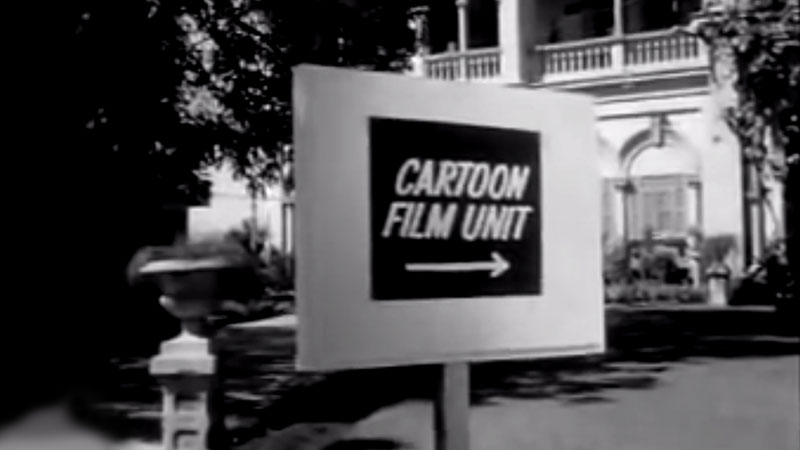
Cartoon Film Unit
Image source: Films Division of India
As a scriptwriter, filmmaker, potter and printmaker- it was Jehangir (“Jean”) Bhownagary’s fascination with the miniature painting style from the Pahari tradition – that lead to the making of ‘Radha and Krishna’ in 1956. Becoming a milestone with 22 minutes of animation it went on to win several accolades.
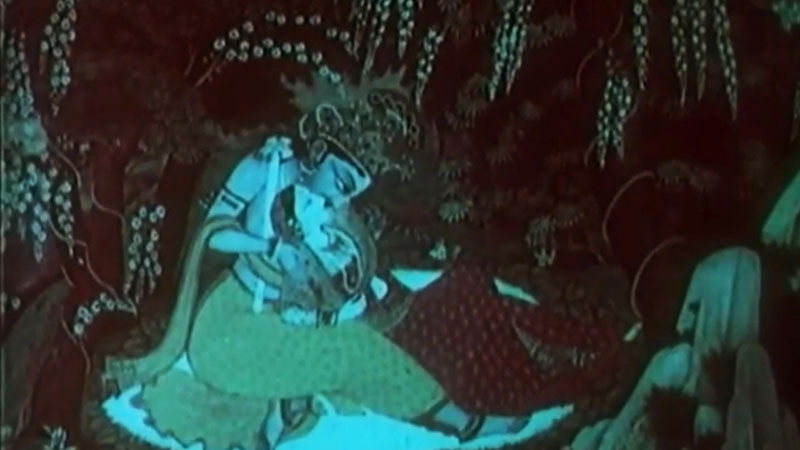
Radha and Krishna
Image source: Films Division of India
Community, caste, creed and color were responsible for the rifts amidst Indians. Post independence the Indian government launched ‘The Five Year Plan’ – the Cartoon Unit played a crucial role in nation building by actively collaborating for the awareness program.
For instance, the animated character of a ‘Sarpanch’ could spread the message across barriers more effectively, being preferred over any actual person.
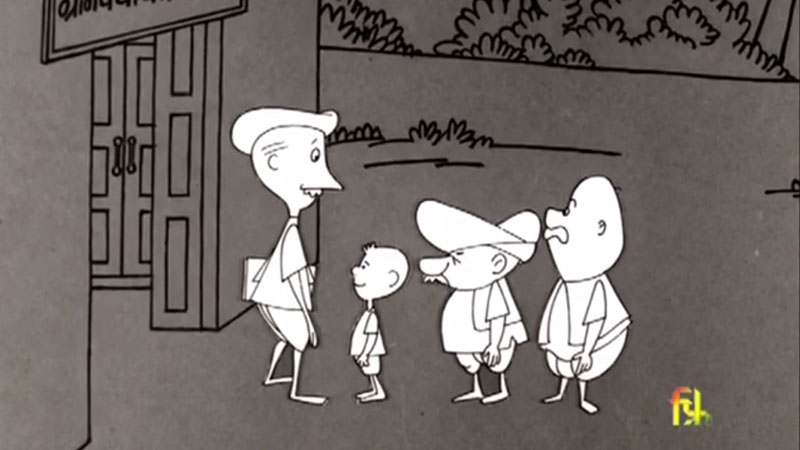
The animated character of a ‘Sarpanch’.
Image source: Films Division of India
The people had to be enlightened about sensitive issues like family planning, hygiene, women empowerment, literacy, child’s right and population control. To make this possible, animators such as G.K. Gokhale, Bhimsain, Ram Mohan, Suresh Naik, B.R. Shendge, Pramod Pati, Satam and Kantilal Rathore came to be a part of the cartoon unit.
Little did they know that the veteran Disney animator Clair Weeks from the US technical aids program would step on Indian soil in the year of 1956. After spending 16 years at Disney working on some unforgettable films like Snow White, Cinderella and Bambi - Week’s came to provide a thorough insight into the possibilities of Animation.
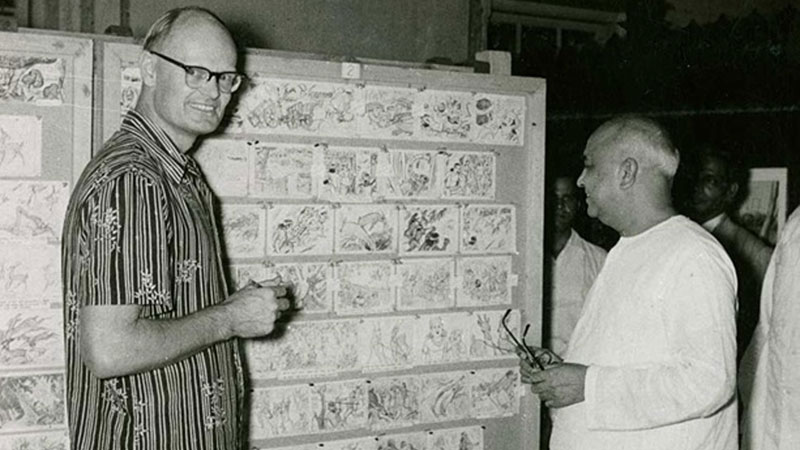
Clair Weeks
(Image source)
Click here to watch his video: https://www.youtube.com/watch?v=sv5-YYesbUk
Indian Animators mastered the basic principles of animation during his active two-year tenure where they made ‘The Banyan Deer’, inspired from a Buddhist Jataka tale, in 1957.
Incidentally a Jataka story talks about Buddha’s previous lives where he is born as a human or an animal. It is interesting to see how the cave paintings from Ajanta worked as a visual inspiration for this film. However, Weeks also happened to have some original model sheets from Bambi, this helped him in instructing the animators who worked on the film with him.
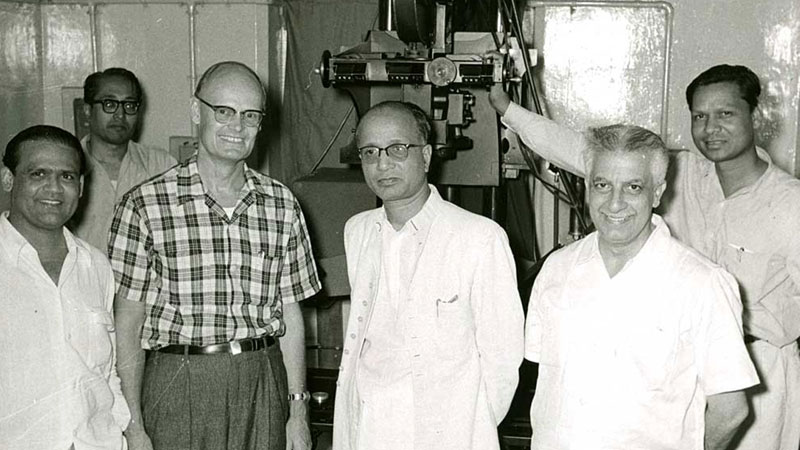
19 April, 1958: D.L. Kothari, Clair Weeks, Dr. B.V. Keskar, Ezra Mir. Behind: H.R. Doraiswamy (Camera Assistant), S.S. Varma (Animation Cameraman)
(Image source)
STORYBOARD
(Image source)
Thereafter numerous films were initiated.
One of the first films educating the masses on a serious subject in the year 1960 was ‘A Great Problem’- made by G.K. Gokhale with Ezra Mir (1956-61) as its producer, it dealt with family planning.
The main purpose being to inform and motivate the masses, films like Tree of Unity, The Dreams of Moujiram, This our India and various others worked as a catalyst, winning a good response from the people.
Few experimental animations also started happening. Pramod Pati, a maverick of Indian Cinema took inspirations from a Canadian animator Norman Mclaren and began to infuse various animation styles and designs in his animation films. Cut-outs, pixilation, time-lapse started happening.
A lot more activities kept humming at the cartoon film unit. The next 2-3 decades saw many more award winning films by some of the expert animators like B.R. Shendge, Shaila Parulkar, Arun Gongade and A.R Sen.
Here is the list of cartoon films made at the Films division of India from 1960s to 2000s.
Also, in 1990, another important task that FDI undertook was the organization of Bombay International Film Festival (Now known as Mumbai International Film Festival, MIFF), for Documentary, Short and Animation Films. Held in every 2 year, the festival was focused on showcasing the growing importance of animation in the Indian context and film enthusiasts from all over the country gather to discuss and screen their films and exchange ideas.
CFSI

A massive number of animation films were produced by another governmental organization called ‘Children’s Film Society of India’ (CFSI). Situated under the same roof as that of the Films Division of India, CFSI supports content which is innovative and the projects are handled by stalwart filmmakers of our industry or even by the debut directors. A many of the well-known Indian animators, including Ram Mohan and V.G. Samant have made films with CFSI. Few of the filmmakers also experimented with puppet films, which was a neglected area of Indian animation. Ajay Kumar Chakroborthy’s ‘Raju and Tinku’ (1982) and Sukumar Pillai’s ‘As You Like it’ (1965) are among them.
Their most recent animated feature ‘Gopi Gawaiyaa, Baaja Bajaiyaa’ by the veteran Indian animator Shilpa Ranade won several accolades.
It also organizes an International Children's Film Festival India (ICFFI) also popularly known as The Golden Elephant once in every two years in which various films are screened and also participates for the competition.
History of CFSI
India’s first Prime Minister, Pandit Jawahar Lal Nehru, fondly known as Chacha Nehru considered children to be the future of the nation and the very foundation of our society, he felt the need to have an exclusive cinema to excite the creative and critical thinking of the children thus CFSI was established in the year 1955 with Hriday Nath Kunzru as its first president. Functioning as an independent body under the Information and Broadcasting Ministry of India, CFSI has produced various entertaining and enriched content in the form of feature films, short animations, animated features as well as documentaries for children. Amole Gupte, India’s top maker of children centric cinema is the current CEO of the organization.
To have detail knowledge of animated shorts and features films produced by CFSI, click at the links below:
• Animated Shorts
• Animated Feature Films



![Image source: [http://animationresources.org/history-clair-weeks-pioneer-of-indian-animation-2/] col-sm-4](https://www.dsource.in/sites/default/files/styles/mini_responsivecustom_user_moblie_1x/public/resource/story-indian-animation/organizations/governmental-org/minigallery/10293/09.jpg?itok=AEl8AKLn×tamp=1446189703)
![Image source: [http://animationresources.org/history-clair-weeks-pioneer-of-indian-animation-2/] col-sm-4](https://www.dsource.in/sites/default/files/styles/mini_responsivecustom_user_moblie_1x/public/resource/story-indian-animation/organizations/governmental-org/minigallery/10293/10.jpg?itok=C0jVP069×tamp=1446189703)
![Image source: [http://animationresources.org/history-clair-weeks-pioneer-of-indian-animation-2/] col-sm-4](https://www.dsource.in/sites/default/files/styles/mini_responsivecustom_user_moblie_1x/public/resource/story-indian-animation/organizations/governmental-org/minigallery/10293/11.jpg?itok=By4k41ff×tamp=1446189703)





